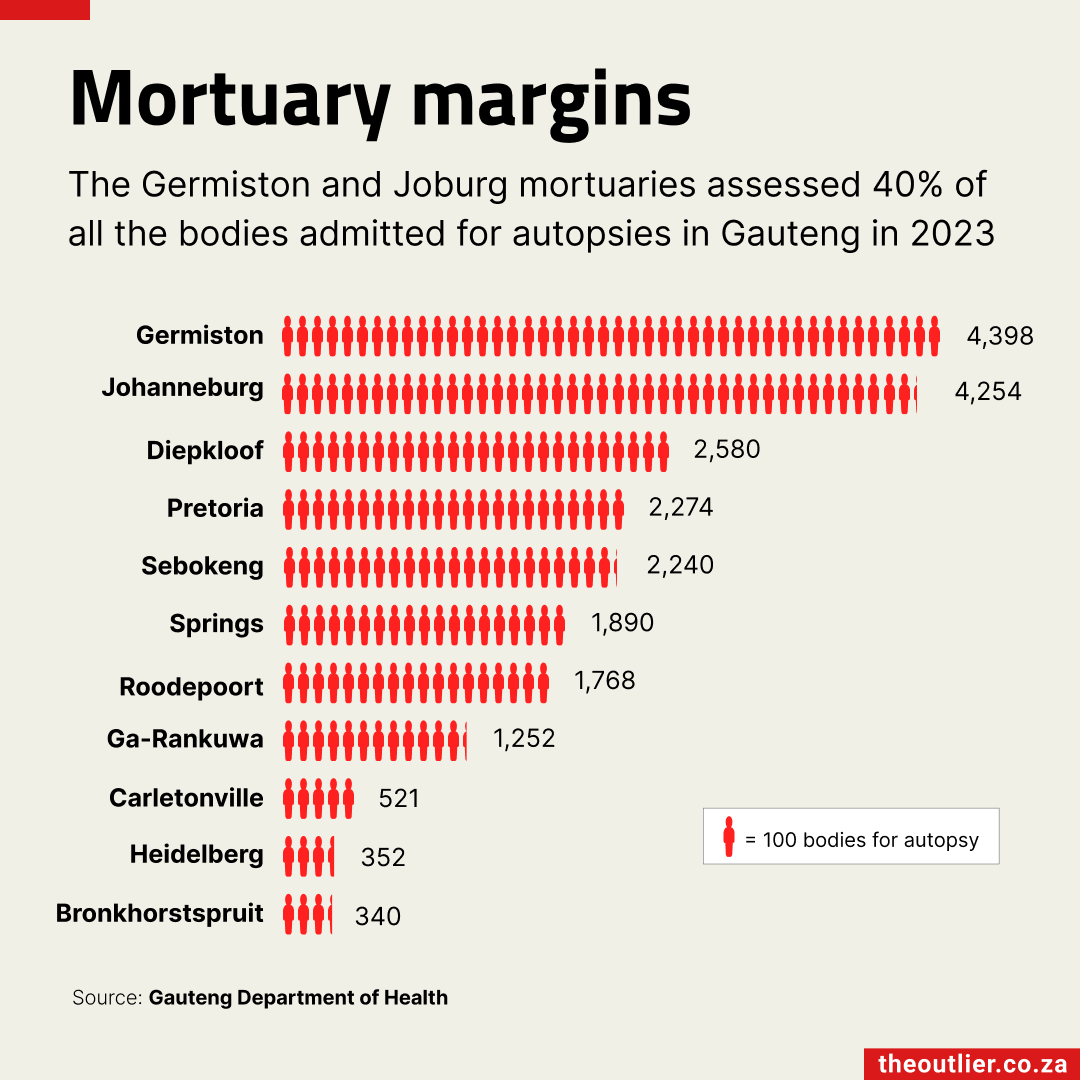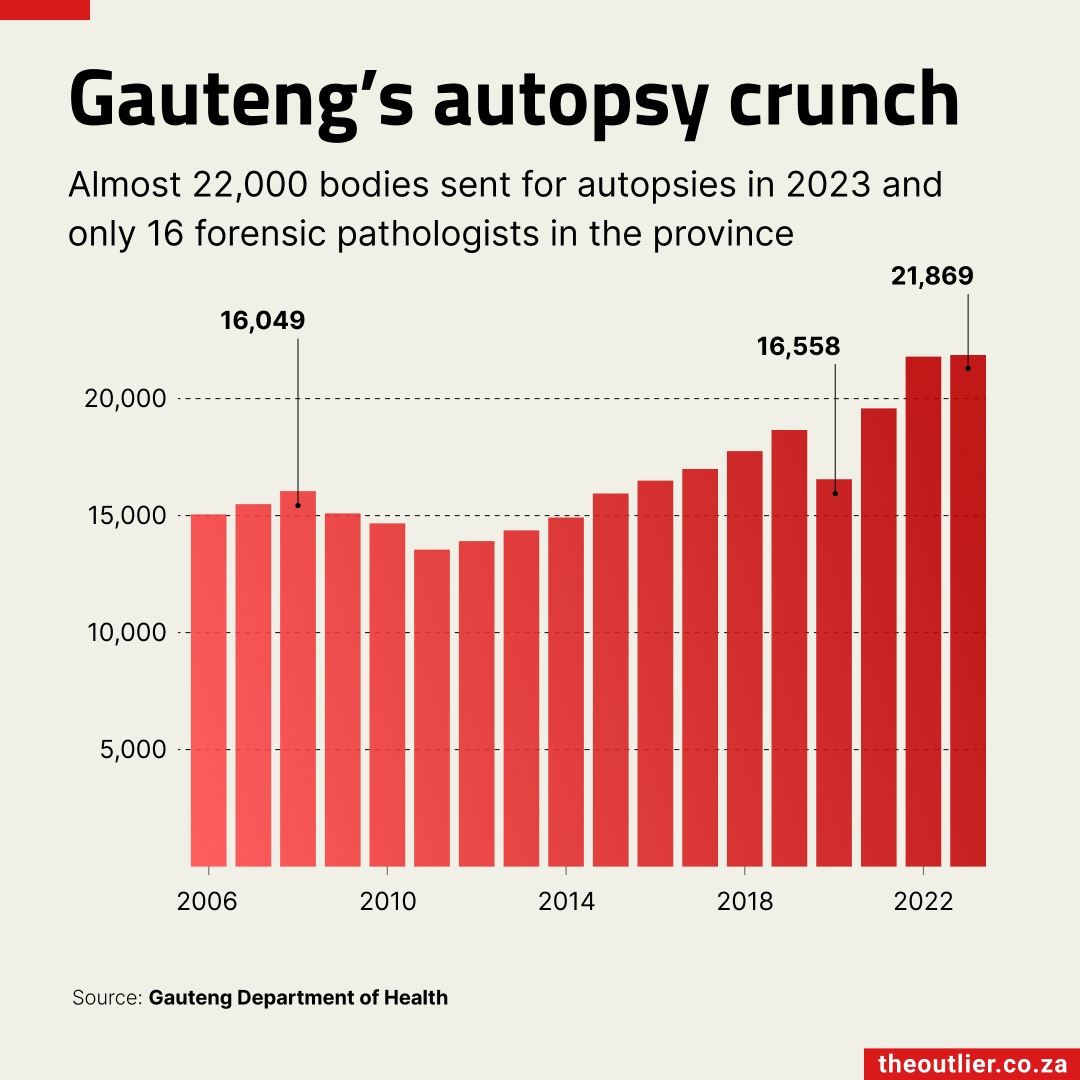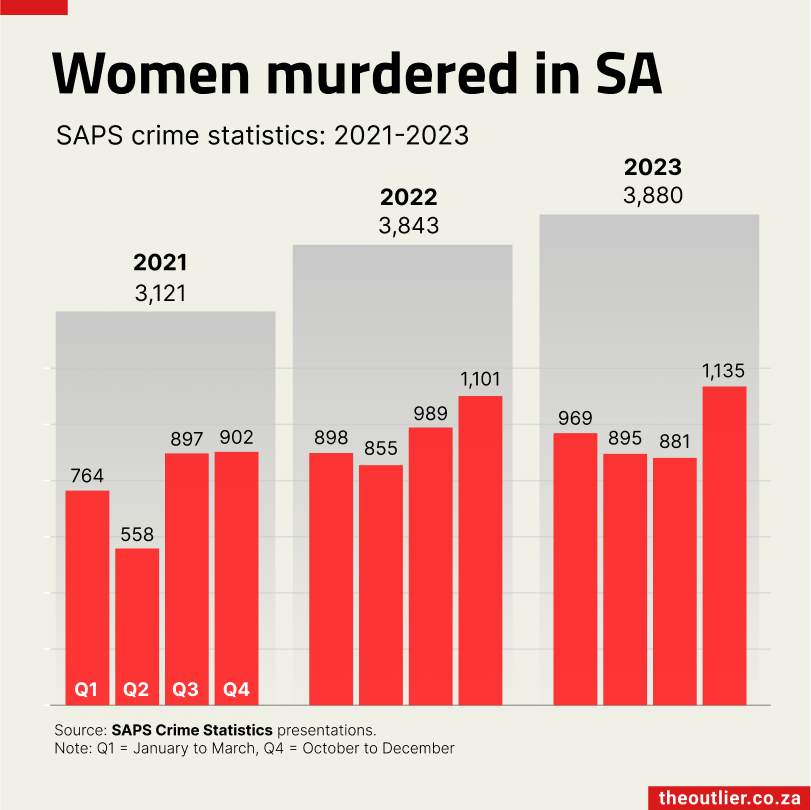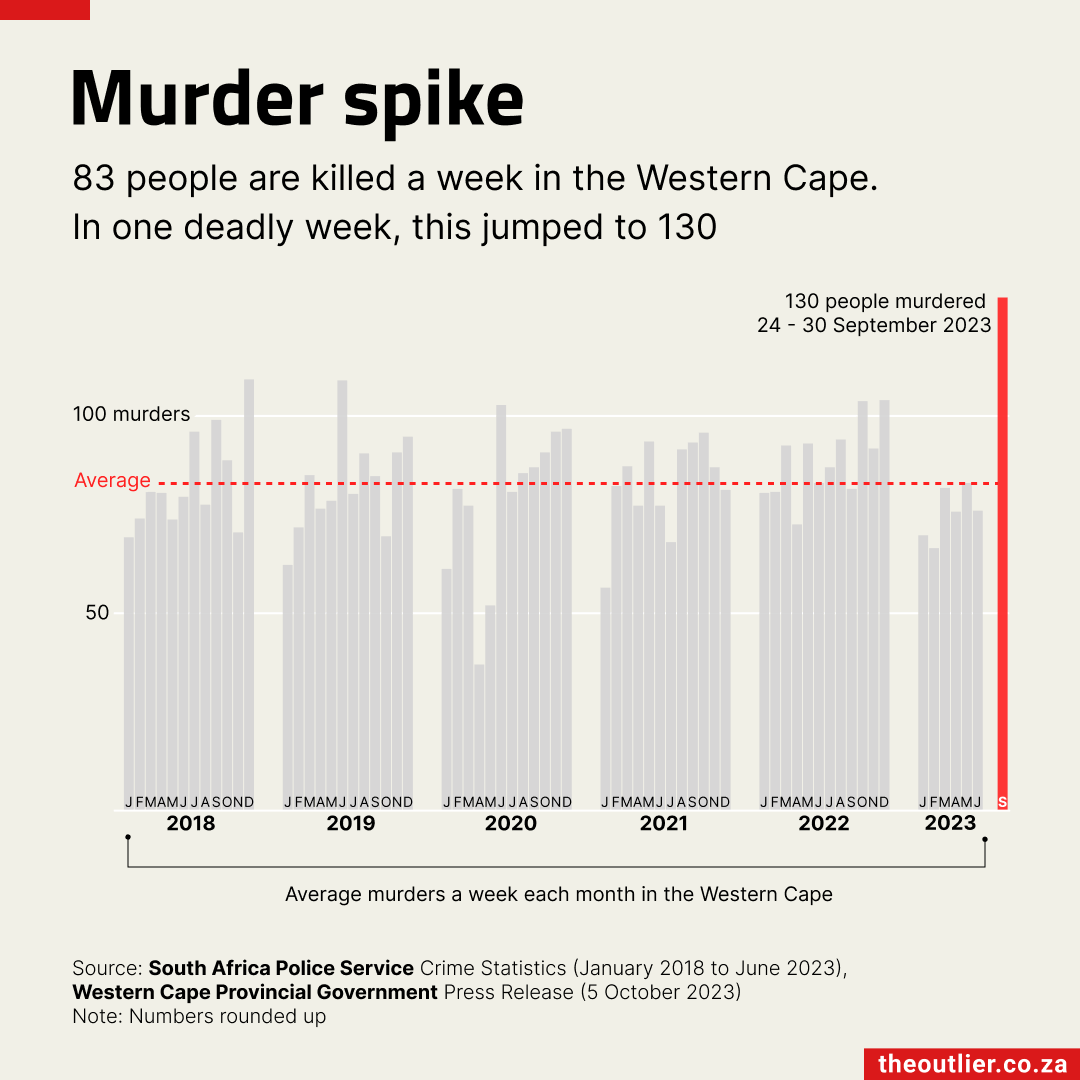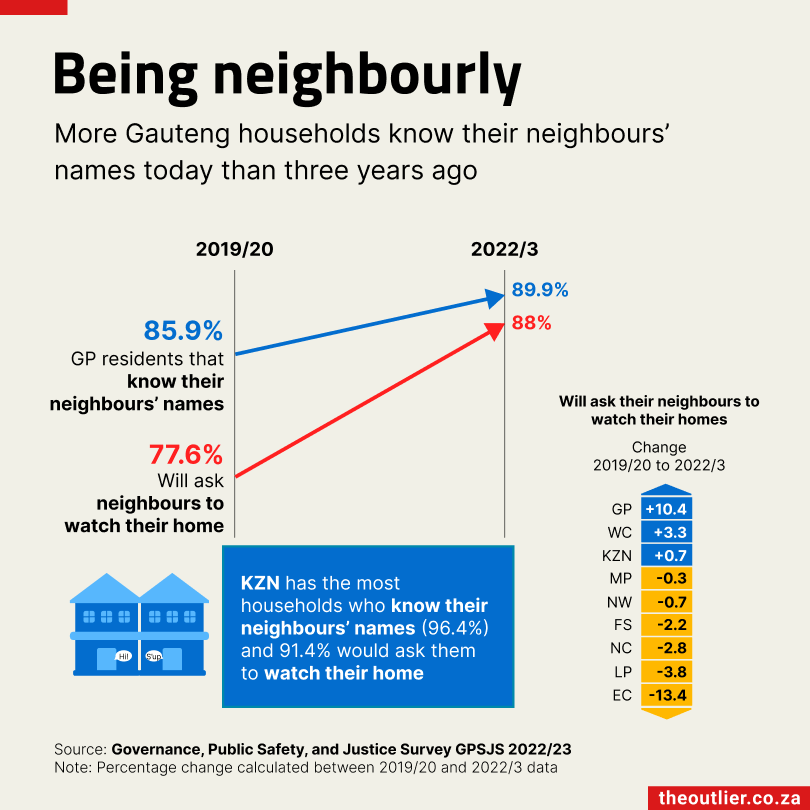Femicide in the police force: when officers kill their partners
Over three years, police watchdog IPID logged 48 cases where police officers allegedly killed their current or former intimate partners.
Protest against gender-based violence. Photo: Gemma Ritchie
Over three years from 2018 to 2020 police watchdog IPID (Independent Police Investigative Directorate) logged 48 complaints of police officers allegedly killing their intimate partners.
In three out of the four cases officers reportedly used their service weapon to shoot the victim. Some used private firearms and, in a handful of cases, victims were suffocated or assaulted to death.

The descriptions in the IPID case register provide little information about what led up to the deaths, but often it was listed as an argument that turned violent. In many cases the officer turned the gun on himself.
This is according to data from accountability journalism project Viewfinder.
The IPID cases are a small percentage of women murdered in South Africa.
In the past year (2021/22), at least 2,700 women were killed. The number of those women that were reportedly killed during a domestic violence dispute was 410, according to stats provided in South African Police Service’s quarterly crime presentations.
A 2007 report on femicide in the SAPS by IPID’s predecessor, the Independent Complaints Directorate, analysed 30 police dockets and found that the contributing factors to police killing their partners were:
- lack of communication or miscommunication between partners
- a lack of support from police service or from their partner
- financial problems
- substance abuse
- relationship break-ups
- jealousy
Wits University Gender studies expert Sheena Swemmer said that alcohol, easy accessibility to firearms and witnessing gender-based violence also factor into the police killing an intimate partner.
The 2007 report recommended several solutions including financial literacy classes, counselling, and openness between commanders and subordinates.
Is there justice for victims?
In more than half (27) of the 48 cases, the officers killed themselves after allegedly murdering their intimate partners.
In the remaining cases, there were 11 arrests and one firing. In nine other cases, we were unable to find an outcome. The Outlier contacted IPID, and we will publish their response when we receive it.
In one case, a police officer killed his ex-girlfriend and her new boyfriend following an argument. The courts later sentenced the officer to life imprisonment.
And in another, a police officer killed his wife, 36-year-old Andiswa Zweni, outside of their child’s school in East London. Three years after the incident, the East London High Court sentenced police Constable Zandisile Zweni to 24 years in prison.

Police suicide
Dr Gráinne Perkins, interim director of the Office of Police Accountability in Seattle, United States, said one of the biggest factors in police-suicides was police firearms.
“There is a complex, if not paradoxical, relationship between the SAPS and firearms. For the senior police personnel, firearms were both a source of safety and of danger.”
Dr Perkins conducted a research study of all the senior commanders in the Western Cape police force in 2015 and heard from one of the officers she interviewed that there was tension in bringing a police firearm home.
“One of the biggest concerns surrounding suicide in policing relates to the stigma that is associated with being unable to cope,” said Dr Perkins.
But that requires police officers to be able to talk about being unable to cope.
“The emotional intelligence which is required to be able to talk to members about how they are doing, unfortunately, goes against the culture and masculinity of the occupational culture of policing but also against South African patriarchy.”
But the SAPS are working towards addressing these suicides, said Dr Perkins.
“Acknowledging that the problem exists is one of the first things that should be done and the SAPS are doing this.”
Methodology
Accountability journalism project Viewfinder supplied data to The Outlier on murders reported to the police watchdog IPID for the years 2018/19, 2019/20, 2020/21 which they received from a Promotion of Access to Information Act request.
I extracted the data on police officers killing their intimate partners using the search terms: wife, girlfriend, fiancé, mother, and the pronouns “her” and “she”. After extracting the data into its spreadsheet, I read through the case descriptions and, in a new column, noted if the case was indeed a man killing a woman, which I have referred to as femicide. After I filtered out the non-femicide cases, I re-read the case descriptions and marked in three new columns whether the police officer killed the victim, the police officer killed himself, and if other people (friends or family) were killed too.

